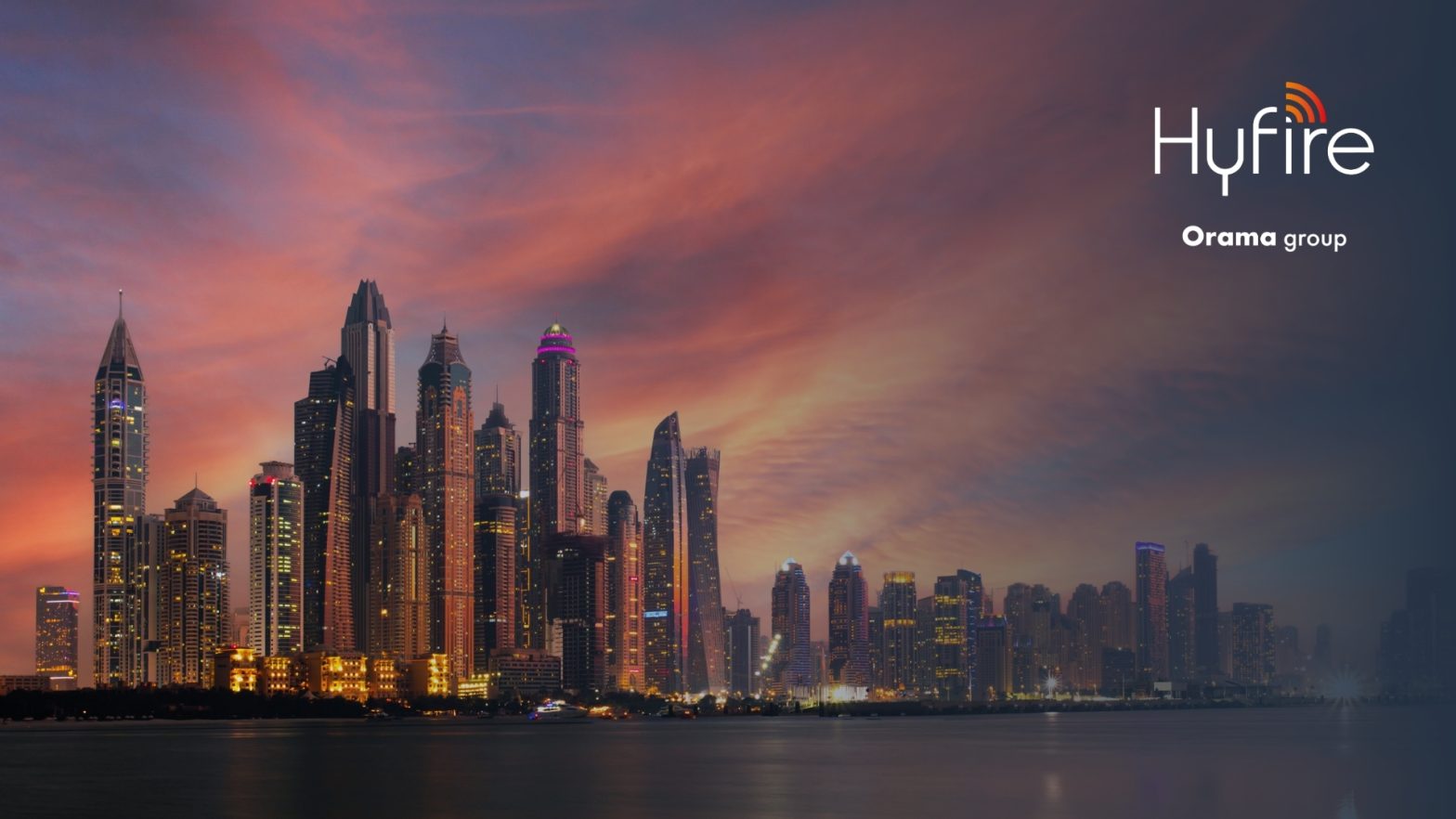In June 2025, a fire broke out on the upper floors of a 67-storey residential building in Dubai. Luckily no one was injured, however, the incident acts as a stark reminder of the importance of fire safety, especially in high-rise buildings. Marina Pinnacle, a residential building home to 3,820 people in the affluent area of the Dubai Marina, was engulfed in flames early in the evening.
High-rise buildings are defining features of modern urban landscapes, but they also present unique engineering and safety challenges. Incidents such as the Dubai fire are sobering reminders that fire safety is not static. It demands continuous improvement, proactive planning, and the adoption of technologies that can adapt to changing building uses and new risks. By embracing robust regulations, cutting-edge wireless systems, and comprehensive evacuation strategies, cities can help ensure that tragedies are prevented, and that residents in even the tallest buildings can feel secure in their homes.
Wireless devices in fire safety
For many years, wired fire alarm systems have formed the backbone of building safety. But as architectural designs become more complex and dynamic, the benefits of wireless systems are increasingly hard to overlook. According to Robert Bruce, UK & Ireland Sales Manager at Hyfire, the shift is clear: “Wireless fire alarm systems eliminate the need for extensive cabling, which significantly cuts installation time and costs. This is especially valuable in complex buildings where traditional wiring would be difficult or disruptive. Their flexibility also makes them ideal for future expansions or modifications.”
A common concern about wireless systems is the risk of signal interference. However, advanced solutions, like those offered by Hyfire, use multiple communication pathways to maintain reliable connectivity even if one channel is compromised. The development of robust, dependable wireless fire alarm systems isn’t just about embracing new technology; it’s a crucial step in ensuring the safety of today’s buildings.
Similarities between Grenfell and Dubai
In 2019, a similar incident occurred in the UK with a much more tragic outcome. Grenfell Tower, a high-rise building located in North London, caught fire in a massive National disaster. The tragedy led the British Government to pass special guidelines which aimed to address the specific safety concerns of residents of multi-storey buildings.
“Fire safety in high-rise residential buildings in the UK has seen major changes in recent years – Robert Bruce continues – The Grenfell Tower tragedy was a devastating turning point that forced the government to review and strengthen regulations to better protect residents in multi-storey homes. The Fire Safety (England) Regulations demonstrate this commitment, even if some parts of the legislation remain open to interpretation.”
Introduced in 2022, these regulations put many of the Grenfell Tower Inquiry’s recommendations into practice. Key requirements include maintaining up-to-date electronic building plans and detailed records of external wall materials. This information gives fire and rescue services critical insights, enabling faster, more informed decisions during emergencies and supporting proactive fire safety planning.
These incidents, from Grenfell in London to the recent fire in Dubai, serve as powerful reminders that fire safety must remain a top priority, especially in high-rise buildings where risks can escalate quickly. Advances in technology, like reliable wireless fire alarm systems, combined with stronger regulations and careful planning, offer practical solutions to help mitigate these dangers. Ultimately, safeguarding lives in our growing cities demands a commitment to continuous improvement, collaboration across industries, and an unwavering focus on ensuring that everyone, no matter how high they live above the ground, can feel safe in their home.
